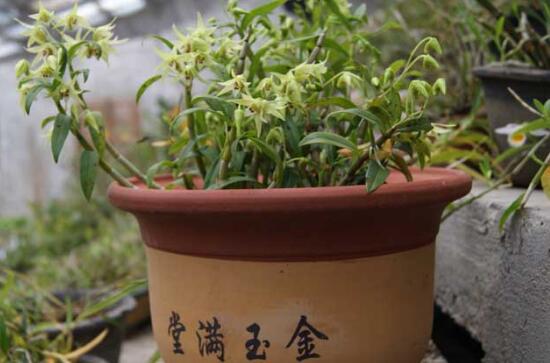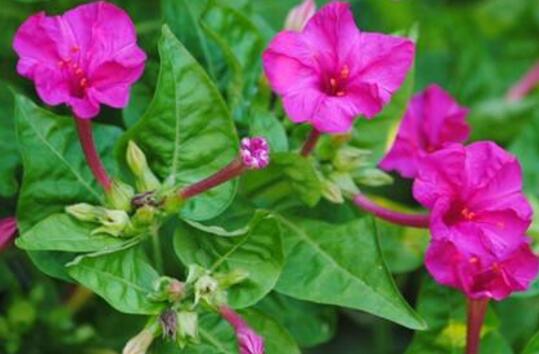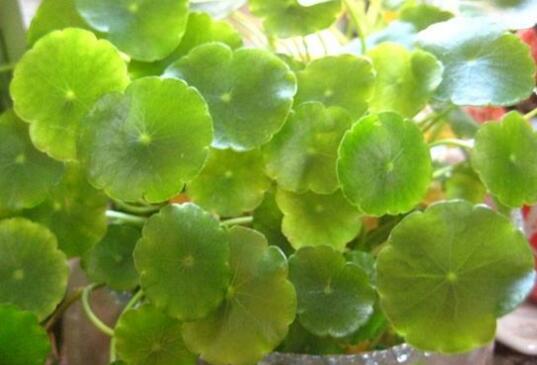Dendrobium leaves yellowing how to do, summer shade to reduce watering / adjust the temperature to change the basin soil
As a kind of ornamental, medicinal and edible plant, Dendrobium is an ideal pot plant in the minds of many people. In daily life, there are many people who raise Dendrobium, but it is not easy to raise. So in the process of breeding, many flower friends often encounter a problem, that is, the leaves are yellow, what about the leaves of Dendrobium? Today, the editor will solve this problem.
First, how do the leaves of Dendrobium turn yellow? find the cause.

As a potted plant, Dendrobium is not easy to raise. Once we do not strictly follow the breeding method of Dendrobium, it may have symptoms of yellowing leaves. At that time, the flower friends must be in a hurry. In order to solve this problem, the editor summarized five reasons for the yellowing of the leaves of Dendrobium, and attached the solutions. Let's move on.
Second, the causes and solutions of yellowing of Dendrobium leaves.
1. Environmental mutation
In fact, there are many reasons for the yellowing of Dendrobium leaves, but environmental factors are easy to ignore. Nowadays, many flower friends' Dendrobium are purchased from the Internet, which is easy to cause a large geographical span, Dendrobium can not adapt for a while, resulting in leaf yellow symptoms.
Solution: we should communicate with the shop owner to understand the growth environment of Dendrobium before, and then we change it to the same environment at home. After Dendrobium adapts, it changes slowly until it fully adapts to the current environment. After a period of time, Dendrobium will return to health.
2. The light is too strong
Dendrobium prefers the semi-overcast environment and does not like the strong sun. Once it is exposed to light for a long time, or the light is too strong, it is easy to make the leaves of Dendrobium yellow.
Solution: move to a ventilated shade and pour appropriate water; usually, it is best to put Dendrobium in these relatively cool places in the living room, and when the sun is not strong in winter, you can move out to bask in the sun.
3. Too much watering
Dendrobium likes a humid environment, so we should water it frequently to keep the basin soil moist. Many of the flower friends who can raise Dendrobium are novice, and it is difficult to control them when watering, so there is too much watering. Once too much watering, it will cause rotten roots, resulting in the symptoms of yellow leaves of Dendrobium.
Solution: move to the ventilated astigmatism to let the moisture of the basin soil evaporate quickly. When it is serious, we need to change the basin soil. Usually about 3 days can be watered once, 3 times a day in summer, depending on the basin soil situation, can be kept moist.
4. The temperature is too high
Dendrobium prefers warm environment and avoids high temperature. In summer, if there are no cooling measures to let Dendrobium grow in high temperature for a long time, it is likely to have yellow leaves.
Solution: at this time, we should put Dendrobium in a cool and ventilated place, and appropriately increase the frequency of watering or spray water to its leaves in time.
5. Soil discomfort
In addition to the above points, the yellowing of Dendrobium leaves may also be caused by poor soil quality. Dendrobium is very strict on soil, which needs loose, drained and bacteria-free soil. Don't be careless at all, otherwise yellow leaves are easy to appear.
Solution: it is very simple to change the basin soil. if you use rotten leaf soil or pine needle soil dug from the field, you should also put it in the sun and disinfect it.
Generally speaking, Dendrobium is not easy to raise, coupled with many flower friends are novice, so it is inevitable to appear leaf yellow symptoms. However, after reading the full text, I believe everyone knows not to panic, the leaf yellow problem can be done in accordance with the above method. With regard to the yellowing of the leaves of Dendrobium, the editor has introduced this, hoping to give you some help.
Pot Dendrobium candidum leaves yellowing how to do, change the basin soil to control watering / proper shading
As one of the most useful varieties of Dendrobium, Dendrobium candidum is very effective, it not only blossoms, but also inherits the medicinal value of Dendrobium, and can treat various diseases of the human body. However, in the process of breeding, many flower friends often encounter a problem, that is, the leaves are yellow, that pot Dendrobium candidum leaves yellow how to do? Today, the editor will solve this problem.
First, how should the leaves of potted Dendrobium turn yellow? find the cause.
As a potted plant, Dendrobium candidum is not easy to raise, once we are a little negligent, such as not in accordance with the cultivation method of Dendrobium candidum to maintain, its leaves may appear signs of yellowing. At that time, the flower friends must be in a hurry. In order to solve this problem, the editor summarized five reasons for the yellowing of the leaves of Dendrobium candidum, and attached a solution. Let's move on.
2. Causes and solutions of yellowing of leaves of Dendrobium candidum.
1. Soil discomfort
In fact, there are many reasons why the leaves of Dendrobium candidum turn yellow, but the first thing we should consider is the soil. With regard to soil problems, it can be divided into two situations, as follows:
① soil is not suitable.
Dendrobium candidum has high requirements for soil, if the soil is not suitable, it will make the roots inactive, resulting in aerial roots exposed in the air, a problem will occur over a long time, its performance is that the leaves of Dendrobium candidum are yellowing.
Solution: change the pot soil, put a large stone in the flowerpot, cover it with a layer of permeable stone, and then cover the stone with a mixture of fermented pine bark and sawdust. Note that the mixture needs to be crushed, sterilized and fermented.
There are many miscellaneous bacteria in ② soil.
Even if the soil is selected, if there is no disinfection, resulting in too many soil miscellaneous bacteria, it will lead to the lack of symbiotic competitiveness of Dendrobium candidum roots, resulting in the symptoms of leaf yellow.
Solution: dry the soil, that is, the mixture in the sun, and then kill the pests and eggs left in the soil with caprylic acid. After a period of time, Dendrobium candidum will return to health.
2. Improper watering
In addition to soil, improper watering is also one of the reasons for the yellowing of Dendrobium leaves. The watering problem is also divided into two situations: one is too much watering, the other is too little watering, the details are as follows:
① watered too much
Dendrobium candidum likes a humid environment, so we should water it frequently to keep the basin soil moist. But once too much watering causes the soil to be too wet, it will cause the roots of Dendrobium candidum to rot and the leaves may turn yellow as a result.
Solution: the stem and rhizome of Dendrobium candidum are not dead, so they can germinate again after the spring is warm, but watering should be controlled: watering every other week or two weeks, after watering thoroughly, spray at ordinary times.
Too little watering for ②
Watering too much does not work, nor too little, it will also cause the leaves of Dendrobium candidum to turn yellow. Once the watering is too little or impermeable, it will lead to the drying of the basin soil, and the leaves will show the symptoms of leaf yellow due to insufficient water absorption.
Solution: watering is suitable for slightly acidic to neutral water, sufficient water is required in spring, summer and early autumn, and watering should be reduced after the Mid-Autumn Festival until watering is completely stopped. Before the leaves of Dendrobium candidum yellowed, it began to reduce watering, further reduced with the yellowing and shedding of the leaves, and stopped when the leaves fell out.
3. Fertilizer problem
After watering, let's talk about fertilization, which is also one of the reasons why the leaves of Dendrobium candidum turn yellow. Dendrobium candidum needs fertilizer, but once the fertilization is improper or too little, there will be such symptoms: the leaves start yellowing from the leaf tip, and then the whole piece yellowed and then fell off.
Solution: encounter the above situation, this may be caused by the lack of potassium, so it is easy to solve, just spray the right amount of potash fertilizer.
4. The light is too strong
Dendrobium candidum likes damp and semi-shady places, although it needs light, it is also astigmatism. Once the light is too strong, it will make Dendrobium feel dry, which is not conducive to its air root breathing, resulting in the phenomenon of leaf yellow.
Solution: while keeping Dendrobium candidum in sufficient light, it should be properly shaded, such as spring, summer and autumn, the amount of shading should be controlled between 30% and 50%, and the light is weak in winter, so the potted plants can be moved to the outside to bask in the sun.
5. The temperature is too high
Dendrobium candidum is very sensitive to the problem, it is not cold-resistant or heat-resistant, once the temperature is too high, it may cause leaves yellowing, or even cause buds to fall off.
Solution: Dendrobium candidum does not like the high temperature, so it should be put in a well-ventilated place in hot summer. If the temperature is too high, it should be cooled down.
Generally speaking, Dendrobium candidum is not easy to raise, coupled with many flower friends are novice, so there will inevitably be leaf yellow symptoms. However, after reading the full text, I believe you have a bottom in your mind. If there is a Ye Huang problem, you can follow the above method. About Dendrobium candidum leaves yellowing, the editor introduced here, hoping to bring help to everyone.
How is the leaf of Dendrobium candidum yellow to return a responsibility? Introduction of reasons and solutions
Dendrobium candidum has high medicinal value, and there are many people who develop the cultivation of Dendrobium candidum. I believe that many bases for planting Dendrobium candidum have encountered such problems. When Dendrobium candidum is planted, the leaves turn yellow and some are dry. Do you know why? Do you know what to do with it? Let's take a look at it together.
Matrix discomfort
[reason] the aerial roots of Dendrobium candidum are exposed in the air, absorbing air and Rain Water.
[methods] the first choice of matrix materials is bark, followed by sawdust, which need to be crushed, sterilized and fermented, usually mixed with several materials and substrates of different thickness.
The matrix is too wet
[reason] too much watering causes the substrate to be too wet and the roots to rot.
[methods] potted Dendrobium candidum needs to be watered every other week or two weeks. after watering thoroughly, it is usually sprayed, and it is necessary to control the air circulation on the balcony. The stem and rhizome of Dendrobium candidum are not dead, so they can germinate again after spring, but watering should be controlled to prevent rotting roots.
Lack of water and drought
Lack of water leads to yellow leaves. Some growers control too much water, coupled with the current relatively low humidity, which leads to the occurrence of yellow leaves. Although it is winter now, water control should not be excessive, especially Dendrobium candidum planted in bed. The phenomenon of yellow leaves caused by lack of water is more common in winter.
[method] watering is suitable for slightly acidic to neutral water, and there will be too much calcium, magnesium and other minerals in bogey water. Sufficient water is required in spring, summer and early autumn, and gradually enter a dormant state after the Mid-Autumn Festival, and the amount of watering should be reduced until watering is completely stopped. But before the leaves turn yellow, they begin to reduce watering, further decrease with the yellowing and shedding of the leaves, and stop watering when the leaves fall out. In North China, it is necessary to maintain a high indoor air humidity after the water is cut off to avoid pseudo-bulb drying and shrinking. If the room is too dry, the basin can be watered every 1 to 2 weeks.
There are too many miscellaneous bacteria.
[reason] there are too many miscellaneous bacteria in the substrate, and the lack of competitiveness of symbiotic bacteria in the root system leads to the yellowing of leaves.
[methods] fermented bark or sawdust, coconut shell, bagasse, rotten fallen leaves or moss should be fully dried in the sun and treated with caprylic acid to kill the remaining pests and eggs in the soil.
The light is too strong.
[reason] the growing environment of Dendrobium candidum needs to be controlled in a humid and semi-shady place. if the sun is too strong, it will make Dendrobium feel dry, which is not conducive to its air root absorption, so it is very important to control its planting environment.
[methods] sufficient light, spring, summer and autumn, shading amount is controlled between 30% and 50%, sufficient light can form a large number of flower buds.
The temperature is too high
[reason] the leaves of Dendrobium candidum were yellowed due to high planting temperature and overheating.
[methods] Dendrobium does not like too high temperature in summer. It often stops growing in hot summer and should be placed in a well-ventilated place. After the flower bud grows, the greenhouse temperature of 20 ℃ to 25 ℃ during the day and 15 ℃ at night should be kept, not too high or too low, otherwise it is easy to cause the bud to fall off.
Lack of potash fertilizer
[reason] the leaves of Dendrobium candidum start yellowing from the tip of the leaves, and then the whole piece of Dendrobium starts yellowing and then falls off, which may be due to the lack of potassium, which makes the leaves yellowing at first, and then the whole piece falls off.
[methods] Potash fertilizer was sprayed.
Physiological yellow
[reason] in winter, it is normal for old plants (mature plants grown from last year's autumn buds or this year's spring buds) to appear yellow leaves in the middle and lower parts, so don't worry.
[method] Don't worry about it.
- Prev

How to raise purple jasmine, the breeding method and matters needing attention / temperature are the key.
It is well known that purple jasmine has many effects and functions, such as its seeds can dispel acne and beauty, roots can clear heat and detoxification, and so on, and if you want to play these roles, you must let purple jasmine grow healthily, so how to raise purple jasmine? Let's take a look at the culture methods and matters needing attention of Mirabilis.
- Next

How to make the leaves yellow? four tricks to make the leaves green again / details are very important.
Under normal circumstances, it is an evergreen plant all the year round, but some flower friends find that their leaves turn yellow, which not only makes the overall plant shape not good-looking, but also may affect the growth of the plant. What if the leaves turn yellow? Let's find out the specific reasons and solutions.
Related
- Fuxing push coffee new agricultural production and marketing class: lack of small-scale processing plants
- Jujube rice field leisure farm deep ploughing Yilan for five years to create a space for organic food and play
- Nongyu Farm-A trial of organic papaya for brave women with advanced technology
- Four points for attention in the prevention and control of diseases and insect pests of edible fungi
- How to add nutrient solution to Edible Fungi
- Is there any good way to control edible fungus mites?
- Open Inoculation Technology of Edible Fungi
- Is there any clever way to use fertilizer for edible fungus in winter?
- What agents are used to kill the pathogens of edible fungi in the mushroom shed?
- Rapid drying of Edible Fungi

